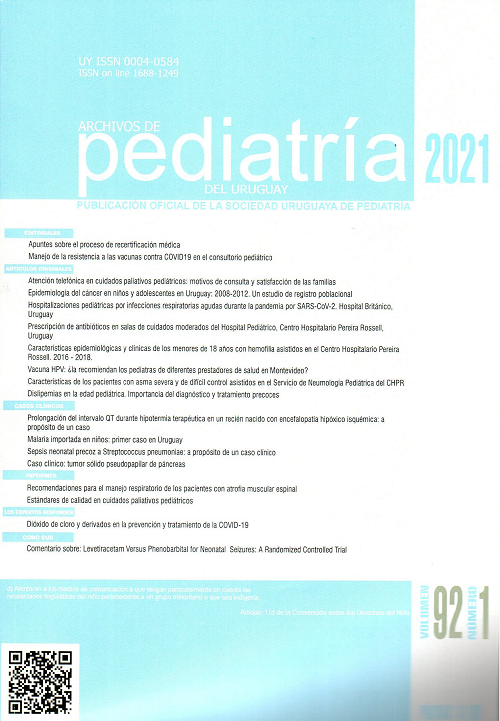Abstract
Malaria is a global health problem. Although there are specimens of the genus Anopheles, in Uruguay, the most frequently described species do not transmit the disease. We hereby report the first case of a girl with imported, uncomplicated Plasmodium falciparum malaria. The objective is to raise pediatricians’ awareness regarding a re-emerging disease and analyze its diagnostic and therapeutic approach.
Clinical case: 8-year-old, healthy girl from Bolívar (Venezuela) who had lived in Uruguay for 15 days. 5 days prior to admission started having 41°C fever, runny nose and dry cough and occasional vomit in the 24 hours prior to admittance. Anorexia and significant asthenia. No skin lesions, headaches or arthromyalgia. Physical exam: asthenia, feverish shivering, diffuse abdominal pain, and hepatosplenomegaly. Complementary studies: anemia, thrombocytopenia, high acute phase reactants and gamma glutamyl transferase. Abdominal ultrasound: moderate hepatosplenomegaly. Parasitological study of peripheral blood: Plasmodium falciparum trophozoites, parasitemia less than 10%. Artemether-lumefantrine was administered for 3 days, followed by primaquine for 14 days, with positive evolution.
Conclusions: Malaria should be considered in cases of children from endemic areas who show acute febrile illness, accompanied by shivering, asthenia and hepatosplenomegaly. The study of the thick and peripheral blood smears carried out by the parasitologist will eventually confirm the diagnosis and define the therapeutic approach. In order to reduce mortality, it is essential to carry out a timely diagnosis and to identify symptoms of severe malaria early on. Treatment will depend on the species involved and risk of resistance to antimalarials.

